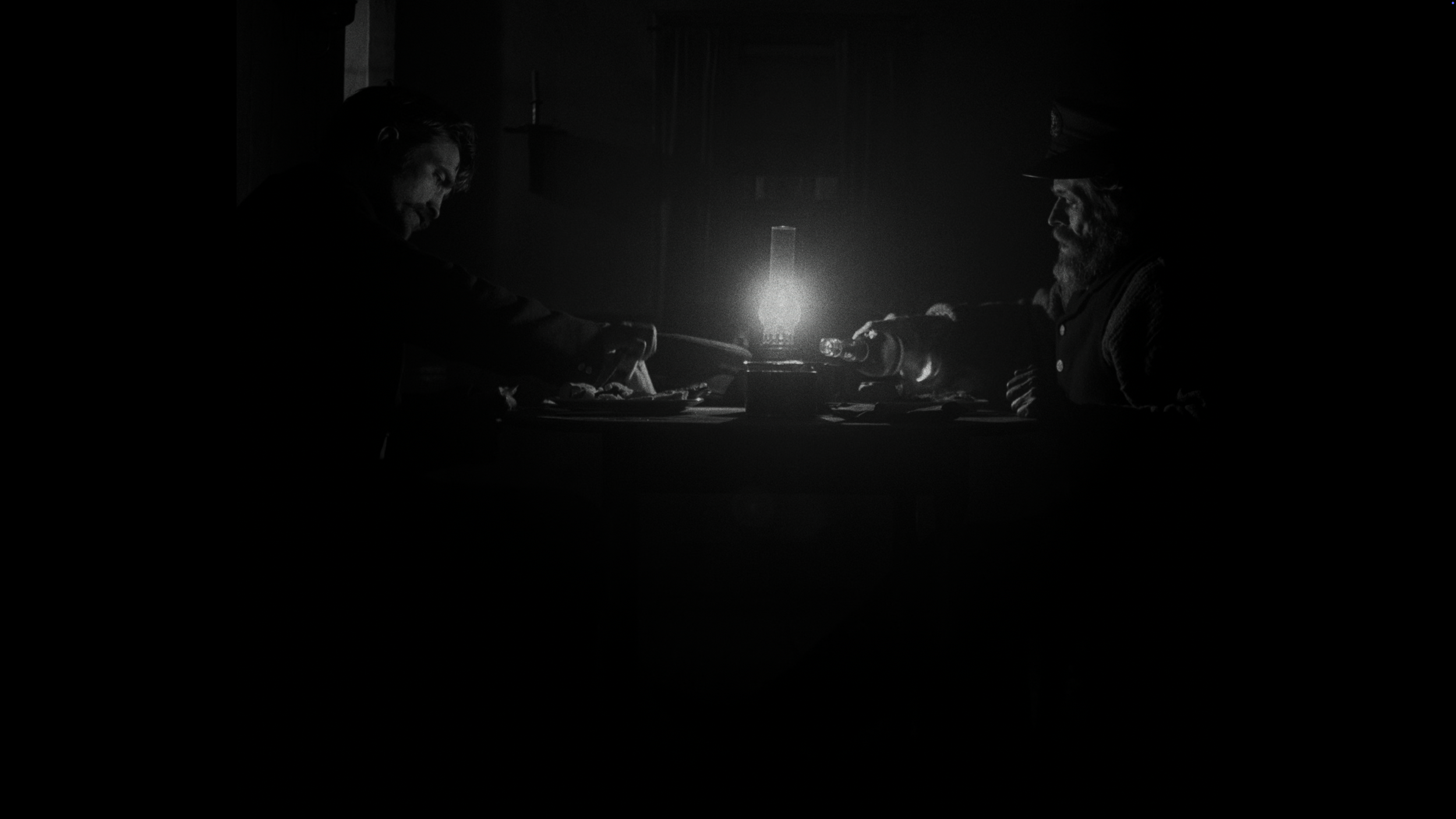The Lighthouse (2019)
Robert Eggers’ “The Lighthouse” is an unrelenting descent into madness, obsession, and isolation…a film as haunting as the foghorn that punctuates its cursed atmosphere. From its claustrophobic framing to the grotesque unraveling of its characters, this is cinema as nightmare, a work that claws at the edges of reality until nothing familiar remains.
Few films use sound as masterfully as “The Lighthouse.” The relentless foghorn becomes the heartbeat of the film… ominous, inescapable, and utterly unnerving. It chills to the bone every time it blares, a signal not just of literal fog but of the encroaching madness that consumes Thomas Wake (Willem Dafoe) and Ephraim Winslow (Robert Pattinson). The score is foreboding, blending seamlessly with the film’s creaking, crashing, and howling soundscape, as if the storm outside were an extension of the storm within. It’s a visceral experience where sound is not just heard but felt.
Visually, this film is astonishing. Eggers crafts the film with meticulous detail, employing black-and-white cinematography that mimics the look of early orthochromatic film. This choice is more than an aesthetic gimmick. It lends the movie an eerie, otherworldly quality. Skin tones appear unnaturally dark, emphasizing the weather-beaten faces of the characters and making the entire film feel like a relic dredged up from the bottom of the ocean. The narrow 1.19:1 aspect ratio enforces a sense of claustrophobia, as if the frame itself is closing in on the audience.
This is a story about the corrosive effects of isolation and the dangerous pull of obsession. Ephraim's fixation on the light itself, a glowing beacon of forbidden knowledge and power, is as much about greed as it is about curiosity. What does the light represent? Salvation? Destruction? Eggers leaves the question tantalizingly unanswered, forcing us to wrestle with our own interpretations. As Ephraim becomes more consumed by his desire to access the light, his relationship with Wake grows darker and more volatile. The power dynamic between the two shifts unpredictably, with moments of camaraderie devolving into violence and paranoia. Their isolation magnifies every grievance, warping time and memory until nothing can be trusted, not even their own minds.
Eggers thrives on ambiguity, crafting a story that refuses to be pinned down. Is the mermaid Ephraim sees real, or a manifestation of his crumbling psyche? The ambiguity is unnerving, making the film feel like a waking dream, or a nightmare. When Ephraim kills the seabird, does he truly invoke the wrath of the gods and cause the storm, or is it merely coincidence? The film teeters on the edge of myth and reality, blurring the line between the two. Even time itself unravels. Wake insists he’s been warning Ephraim to ration supplies for weeks, though Ephraim believes only a day has passed. Who is lying? Or is time, like everything else, collapsing under the weight of their madness?
The most chilling questions, though, are the ones that strike at Ephraim’s identity. When he flips over the body of a drowned man, only to see his own face staring back, the film tips into psychological horror. Is this guilt manifesting? A foreshadowing of his fate? Or is it further proof that reality, on this isolated rock, is a slippery thing?
Much of the film’s power lies in its fantastic performances. Willem Dafoe is hypnotic as Thomas Wake, his monologues dripping with poetic old-world menace. He’s a man so steeped in superstition and power games that he feels less like a person and more like an elemental force. Robert Pattinson, meanwhile, gives a career defining performance as Ephraim, a man unraveling before our eyes. His transformation is mesmerizing and deeply disturbing.
This is a film that doesn’t provide us with easy answers or resolutions, and that is precisely its genius. It’s a film that demands to be revisited. The questions it poses about identity, obsession, and the nature of reality are as maddening as the storm it depicts. Eggers has crafted a work of art that unsettles, confounds, and burrows deep into the viewer’s mind.








